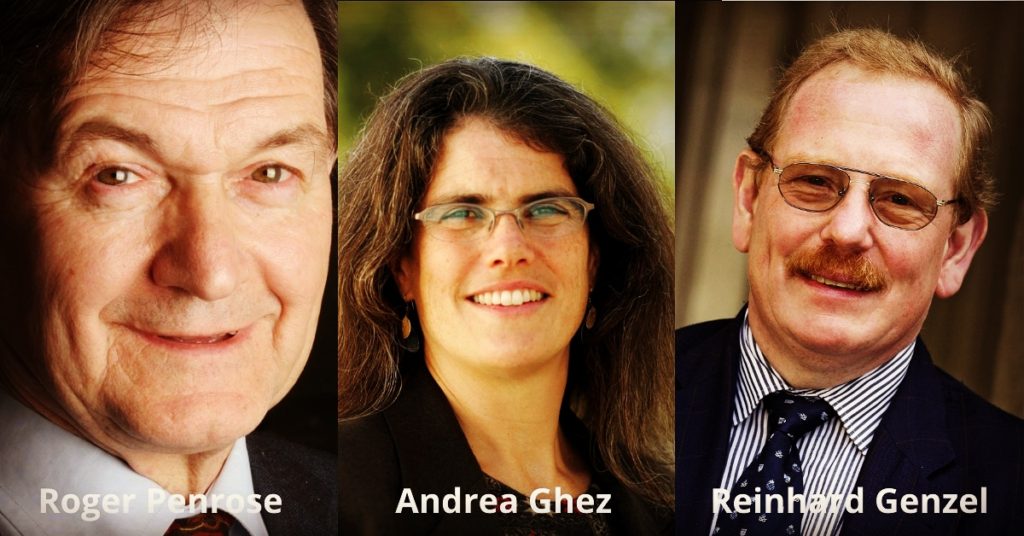On October 6, 2020 the Royal Swedish Academy of Sciences announced Nobel Prize in Physics for 2020. The 114th Nobel prize in physics was conferred to Roger Penrose as one half, and Andrea Ghez and Reinhard Genzel jointly for the other half. This is to be noted that Andrea Ghez has become the fourth woman to win a physics Nobel, the other three are Donna Strickland (2018), Maria Goeppert Mayer (1963) and Marie Curie (1903).
The “Nobel” Prize
Founded in 1739, the Royal Swedish Academy of Sciences is an independent organization that is working on promoting the sciences and strengthening their influence in society. The amount for this year’s Nobel Prize is 10 million Swedish kronor. One half of this amount was given to Sir Roger Penrose who is a Professor at the University of Oxford, UK. The other half was provided jointly to Reinhard Genzel and Andrea Ghez. Genzel is the director at Max Planck Institute for Extraterrestrial Physics, Garching, Germany and is also a professor at the University of California, Berkeley, USA. Ghez, who is also from the USA is a professor at the University of California, Los Angeles, US.
Also Check: 150 Women in 150 Words Project
Black Holes and The General Theory of Relativity
Black holes are a strange celestial phenomenon to describe. According to The General Theory of Relativity, black holes are made up of huge amounts of matter squeezed into a small area. They exert gravity that’s so powerful, not even light can escape their grip.
Roger Penrose who is a mathematical physicist, utilized ingenious mathematical methods to prove the existence and formation of black holes. Penrose published a groundbreaking paper in 1965 in which he explained in detail the ideas of black holes which are contrary to Einstein’s view of black holes (paper published in 1939). As per Albert Einstein black holes “do not exist in physical reality”.
Penrose has proved that black holes are a direct consequence of Albert Einstein’s general theory of relativity. He derived new mathematical concepts and techniques in his paper that have been used for studying black holes ever since. Stephen Hawking with Roger Penrose used these mathematical tools to prove the Big Bang cosmological model that shapes our understanding of the history and origin of the universe. This shows that the universe, at the very initial moment, came into existence from the singularity. In the public sphere, this result is best known as the Penrose-Hawking Singularity Theorem.
This is to be noted that Penrose’s work is regarded as the most important contribution to the general theory of relativity since Einstein, the same work has propelled the identification of new black holes.
Impotent Updates From Current Events In Science and Technology –
- AstroSat Discovers A Star Galaxy Located 9.3 Billion Light-Years Away
- SpaceX Crew Dragon Demo-2 Mission
- ISRO Gets Patent For Manufacturing Moon Soil
What Lies in The Centre of Our Galaxy
The other half of the Nobel prize in physics for 2020 was given to resolve the query as to what lies in the center of the Milky Way? Reinhard Genzel and Andrea Ghez using the world’s largest telescopes (Keck Observatory and the Very Large Telescope) and employing adaptive optics have independently discovered a supermassive compact object at the center of our galaxy.
By observing the motions of stars Genzel & Ghez has come up with an extremely massive and invisible object known as Sagittarius A* at the center of our galaxy. It has a mass of 4 million suns and is about the size of the orbit of Mercury. Sagittarius A* is 26,000 light years away from Earth. Scientists have predicted that a black hole is hiding inside the bright and compact Sagittarius A*.
You May Also Like To Read-
- Blue Flag Certification – An Environmental Award
- What is Solar Minimum?
- Artemis Mission of NASA – A Journey To The Moon and Beyond
Importance of Nobel Prize in Physics for 2020
Nobel prize in physics for 2020 revolved around cosmology and astrophysics. The work done by the laureates in the field of physics offers a new outlook for the study of compact and supermassive objects and thereby extending our understanding of the universe. Following these studies, exploring more about gravity and getting a picture of Sagittarius A* are next on the list.
